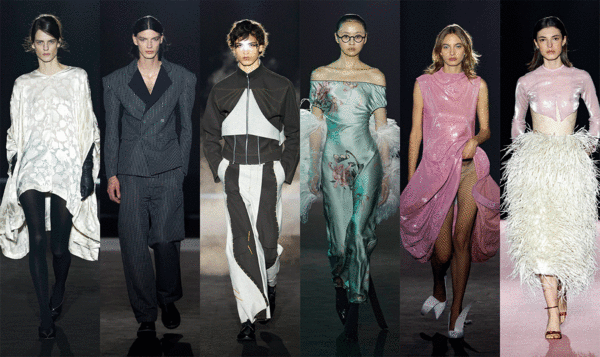In personal styling, identifying the specific colour palette for each individual can elevate a look from ordinary to extraordinary.

Colour analysis: the science of colours in personal styling
Date
25 October 2024
This is the world of colour analysis a discipline that studies the harmony of colours in relation to personal appearance and which is gaining more and more space in the fashion and wellness sector.
What is colour analysis?
Colour analysis is a science based on colour theory that associates people with different categories, called “seasons”. Each season comprises a specific palette of shades that best highlight individual characteristics.
Its roots go back to the beginning of the last century, when Swiss artist, Johannes Itten, developed a new colour theory that took into account the two main characteristics of colour: temperature (warm or cool) and value (light/dark).
Colours are categorized as warm (yellow-based) or cool (blue-based), with three primary colours:
- primary magenta or red
- primary yellow
- primary blue
All other colours derive from these three, with the addition of white and black to give brightness or depth.
This science reveals how to maximise each person’s natural appearance, offering new insights into personal styling while redefining the art of dressing and colour coordination.
The colour analysis test: discovering your palette
The colour analysis test is a process that helps determine a person’s “season” and their most enhancing colour palette. When conducted by a professional, it provides tailored guidance for clothing and make-up choices.
Typically, a professional colour analysis test involves the following:
- Preliminary analysis: the consultant assesses natural characteristics, like skin undertone, eye and hair colour in natural light.
- Preparation: the client wears a white gown or cape to neutralise the influence of other colours and any make-up is removed from the face.
- Testing with coloured drapes: drapes of various shades are placed near the client’s face to observe their interaction with the complexion.
- Undertone assessment: gold and silver drapes are used to determine if the skin undertone is warm or cool.
- Identification of intensity: the consultant evaluates whether bright or subtle colours are more flattering.
- Determination of the season: the client’s “season” is identified based on the results.
- Creation of the customised palette: a personalised palette of colours is selected to enhance the client’s natural features.
- Final consultation: the professional provides advice on how to use the palette in clothing and make-up.
While online tools are available, professional colour analysis guarantees precision, uncovering subtle nuances that might otherwise go unnoticed.
Colour analysis palette: seasons and colours
Itten categorised colours into four seasonal palettes inspired by nature:
- Spring: warm, bright colours (e.g. apple green, coral, turquoise, narcissus yellow)
- Summer: cool, light colours (e.g. sea blue, light blue, lilac, rosy red)
- Autumn: warm, dark colours (e.g. pumpkin orange, brown, wine red, bottle green)
- Winter: cold, dark colours (e.g. icy white, dark blue, ruby red, violet and blue)
Each season offers a wide range of shades that can be used to create customised and flattering looks.
Colour analysis and personal styling: a perfect match
When integrated into personal styling, colour analysis takes image consulting to a new level by offering a tailored approach that goes beyond fleeting trends.
Using their knowledge of colour theory, a Personal Stylist becomes an “image architect”, crafting looks that enhance each client’s natural beauty through their unique colour palette.
Clothing should not only fit well, but also illuminate the face, brighten the eyes and enhance the complexion. When this happens, a perfect synergy is created between the person and the outfit they are wearing, achieving the image consultant's ultimate goal: to bring out natural beauty through colour.
Becoming a Personal Stylist specialising in colour analysis
For many, turning a passion into a career is the ultimate goal. In the field of image consultancy, developing a love of fashion, beauty and colour into an inspiring career requires dedication, creativity and targeted training.
The professional path of a Personal Stylist begins with theoretical training, which must then be supplemented by practical experience such as internships and collaborations. This combination of study and application in the field is important to develop specific technical skills and to succeed in this field.
In this ever-evolving field, continuous learning is essential. Staying updated on the latest trends, techniques, and tools ensures competitiveness and offers clients cutting-edge services.
If you aspire to a career in this exciting field, IED's training programme includes a specific Personal Stylist course that, through a combination of theory and practice, will provide you with the necessary tools to turn your passion into a successful profession in the world of personal styling.








